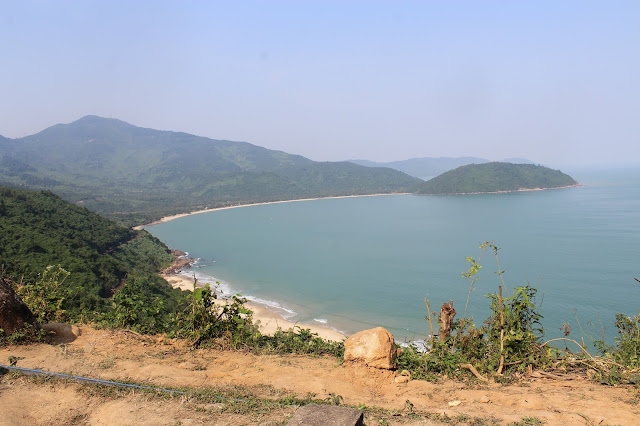THE LUNAR NEW YEAR brought with it a fresh opportunity to venture beyond the confines of the Imperial City, and through a combination of increased leisure time and over-stretched public transport, it seemed sensible to facilitate that journey by motorcycle. With one of the world's most renowned mountainous coastal highways being but a short distance to the south, it was time to quickly copy down a google map into the notebook.
The Hai Van Pass is situated on a spur of the Trường Sơn mountain range, connecting Thừa Thiên-Huế province to Đà Nẵng. The mountain pass was once infamous for the high number of accidents that occurred along its serpentine, 21 km length. Since the opening of South East Asia's longest tunnel (the inappropriately named Hải Vân tunnel- inappropriate because Hai Van means ocean cloud), fewer heavy goods vehicles and cars take the high road, leaving it a much safer place for tourists and travellers, local and foreign, to hurtle along at semi-sensible speeds.
Now connecting two provinces, this narrow strip of coastal road was once all that divided two great, historic Southeast Asian kingdoms: Đại Việt and Champa. And what a formidable barrier it would have been. Even travelling by motorcycle on a well-maintained stretch of tarmac was gruelling: it is difficult to imagine marching a medieval army along a treacherous mountain trail, many centuries ago.
Now connecting two provinces, this narrow strip of coastal road was once all that divided two great, historic Southeast Asian kingdoms: Đại Việt and Champa. And what a formidable barrier it would have been. Even travelling by motorcycle on a well-maintained stretch of tarmac was gruelling: it is difficult to imagine marching a medieval army along a treacherous mountain trail, many centuries ago.
Vietnam's history is tied inexorably to its geography. The lowlands are rich, fertile, and ripe for rice cultivation, but they are divided from one another by numerous mountain ranges. that jut right out into the East Sea. The mountains of Trường Sơn protected the Champa from their Vietnamese for a long time, but ultimately they succumbed to the might of the Lý dynasty sometime around AD 1000 and their capital, Indrapura (not far from modern Danang) was sacked. Hanoi's ascending dragon went on to annex the kingdoms of the Champa polity, with the last one falling some two hundred years ago.
It's not really a dérive, following a designated path at high speed, with the aid of a vehicle. Highways are not the places to conduct psychogeographical surveys, unless one is travelling by foot. Nonetheless, my mind did occasionally drift to thoughts of that ancient Cham culture. This land was once theirs, and yet few traces of their culture remain. Despite their grand history, they feature only vaguely in the accepted historical narrative of the nation.
 |
| Map from Cham museum in Hoi An. |
The dialogue concerning Vietnamese cultural identity is still framed within the dialectic of north-south, forty years since the reunification of the country. As the crow flies, Huế is slightly closer to Hanoi than Saigon (537 km compared to 640 km), although the distance from the former southern capital is exaggerated by the serpentine route followed by the southbound highway. However, throughout the duration of the war Huế was very much a city of the south, with the 17th Parallel that divided the nation sitting more than 100 km north of the city. So far I am yet to meet a single Huế citizen who has self-identified as either northern or southern, with most distinguishing themselves as part of a distinct, central Vietnamese culture. Of course, this being Vietnam (with 54 distinct ethno-linguistic groups living amongst a Kinh majority already divided into innumerable unique regio-dialecto- distinctions), most of my friends describe themselves as being from Huế, first and foremost.
 |
| Panorama of Hai Van. Click for a larger image |
The lessons continue. Whilst slowly I learn history and folklore, superstition and language, my explorations need to continue using what I do know, to analyse what I think I can see... and these explorations need to be mapped.





No comments:
Post a Comment